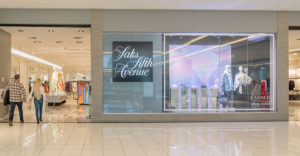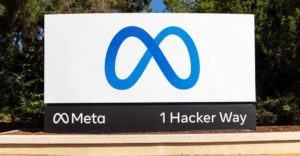Inflation woes and a looming recession did little to dampen online shoppers’ enthusiasm on Cyber Monday, according to figures released Tuesday by Adobe Analytics, a tracker of seasonal e-commerce activity.
Adobe estimates online shoppers spent US$11.3 billion on Cyber Monday, a 5.8 percent increase over 2021 when sales for the Monday after Thanksgiving were $10.7 billion.
Concerns about inflation, recession, and high interest rates are being offset by high employment and wages, maintained Sucharita Kodali, an analyst with Forrester Research, a national market research company headquartered in Cambridge, Mass.
“All year, spending has been covering the effect of inflation,” Kodali told the E-Commerce Times.
“Worries about the recession are different from not having funds in your bank account,” she explained.
Kodali added that while mortgage rates and borrowing are higher, people aren’t financing clothing or restaurant purchases.
Retailers Make Right Call
Adobe acknowledged that inflation is being felt in the United States, but much of the revenue raked in by retailers on Cyber Monday was due to demand, not higher prices. It noted that its digital price index, which tracks prices across 18 categories of products, shows that prices have been flat in recent months.
It added that deep discounts, as well as the availability of goods, contributed to brisk sales on Cyber Monday.
“With oversupply and a softening consumer spending environment, retailers made the right call this season to drive demand through heavy discounting,” Adobe Digital Insights Lead Analyst Vivek Pandya said in a statement.
“It spurred online spending to levels that were higher than expected and reinforced e-commerce as a major channel to drive volume and capture consumer interest,” he added.
Kassi Socha, consumer and culture analyst at Gartner, a research and advisory company based in Stamford, Conn., noted that her organization’s consumer research has found price and value top motivators for gifters during this holiday season.
“At a time when consumers are feeling the impact of inflation-related price increases, strategic discounting is a strong way for brands to capture consumer attention,” she said.
Adobe noted that discounts in electronics were as strong as 25% (compared to 8% last year) and in toys as much as 34%.
Rebound From Unusual Year
David Swartz, an equity analyst with Morningstar Research Services in Chicago, explained that discounting this year is higher than last year because 2021 was an unusual year for discounts.
“Last year was a strong year for consumer spending, and inventories were low because of shipping and ordering problems caused by the pandemic,” Schwartz told the E-Commerce Times.
“Last year retailers didn’t have to discount because they were short on inventory and people were spending strong,” he said. “They were able to sell a lot at full price last year.”
“This year, inventories are higher, and consumer spending has slowed a little bit because inflation has crowded out some consumer spending,” he continued. “But it’s not as bad as people expected it to be. Consumer spending is holding up, and that’s what government numbers have shown.”
“The economy is slowing, but it’s not like 2008 when unemployment was over 10%, or 2020 when the pandemic hit and inflation went up to 15%,” he said. “Right now, we have high inflation but still a relatively solid economy.”
“The holiday season is not going to be as strong as last year, but it’s not going to be a recession-level season,” he added. “It’s going to be a pretty decent holiday season.”
Forward Thinking Retailers
Rob Enderle, president and principal analyst with the Enderle Group, an advisory services firm in Bend, Ore., agreed that retailers are offering some enticing discounts for the holidays.
“The retailers have pulled out the stops, and they’re offering some decent deals that are feeding the frenzy,” Enderle told the E-Commerce Times.
“In certain categories, we’ve gone from an undersupply to an oversupply,” he explained. “Retailers want to dramatically reduce their warehouse products before the new year. Next year is going to be a tough year to move products, so you don’t want to be stuck with a bunch of inventory going into the year.”
“Retailers are aggressively reducing inventory because if you’re walking into a year where people are not going to have a lot of money, that’s not a year you want to have a lot of inventory,” he continued. “You’ll be carrying it on the books for most of the year.”
“That’s why there’s heavy discounting,” he added. “It’s a combination of wanting to reduce inventory and a recognition that the amount of money that will be available to buy next year should be substantially reduced.”
2023 Hangover?
Enderle warned, however, there may be consequences for retailers and shoppers stemming from this year’s spending spree.
“Folks seem to be all right with spending a lot of money on gifts,” he said. “What’s troubling is the amount of debt they’re taking on, especially given how high interest rates are.”
“Inflation has eaten into people’s spare cash, and they’re making up for it with debt,” he continued. “That’s going to be problematic for next year because that debt is going to have to be repaid. With interest rates as high as they are, that’s going to be difficult.”
“This year’s feeding frenzy is going to result in a rather nasty hangover next year,” he predicted.
Adobe noted that “Buy Now, Pay Later” continues to be a popular form of payment for consumers, although it was more often used during the Black Friday weekend than on Cyber Monday. “For consumers concerned about inflation’s impact on their household budgets, BNPL solutions are an optimal way to spread out expenses over the holiday season,” Socha explained.
One reason BNPL may have been more popular over the cyber weekend is cart size, according to Adobe. It explained consumers are more likely to use BNPL when shopping cart totals are higher. Overall, it added, Cyber Week BNPL orders increased 85% over the previous week, and revenues jumped 88%.
“The big question now will be whether online retailers and shoppers sustain this activity or whether this was an outsized push around discounts that will settle down in the days and weeks to come,” Adobe mused.
“Layoffs that we’ve been seeing in the e-commerce sector, and depressed valuations for companies in the space, are two indicators of more challenging times to come,” it added.

























































Social Media
See all Social Media